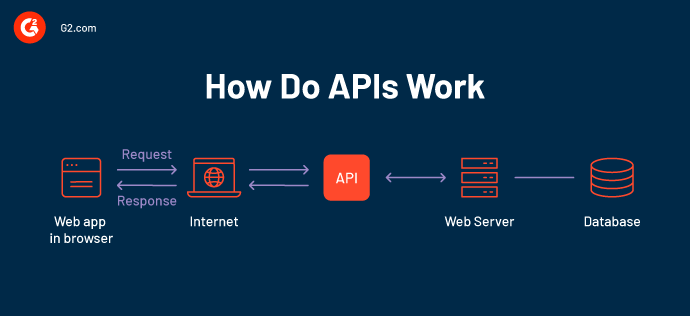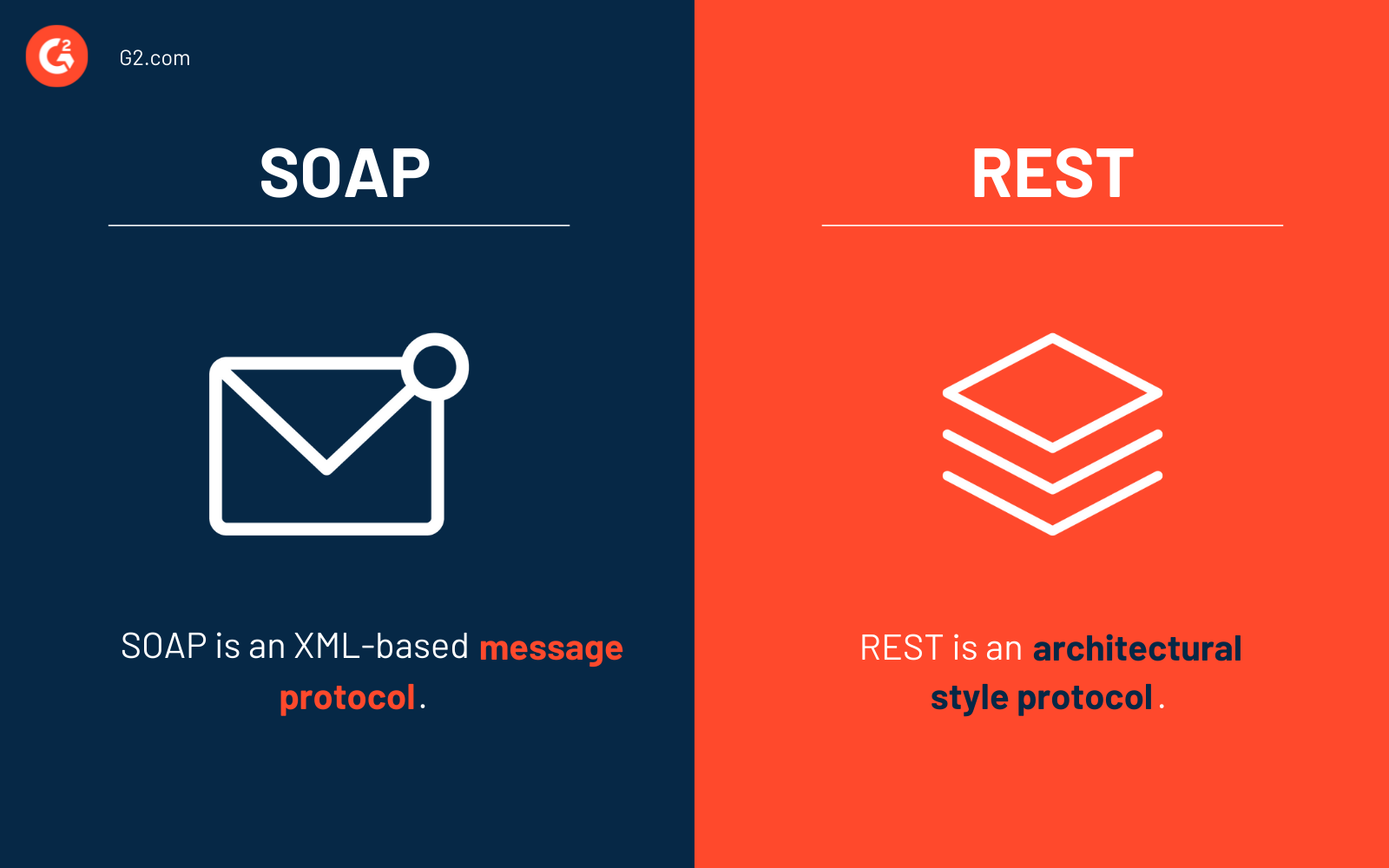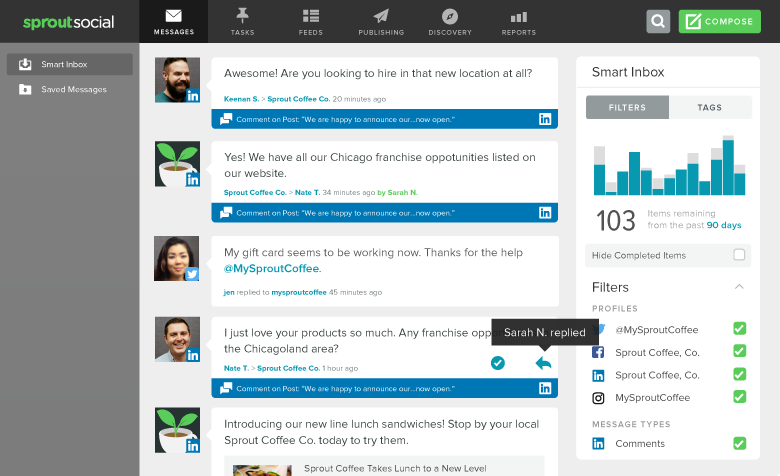Think of the internet as a web of connected servers.
Everything online lives on a remote server somewhere. These assets are accessed upon request. For example, when you type www.YouTube.com into your browser, your request is sent to YouTube’s server. Then, when your browser receives a response, it translates and displays it in your browser. That translation is the work of an application programming interface (API).
An API is a set of tools that allows other applications to seamlessly interact with software systems to retrieve and upload data from one system to another.
APIs help developers build apps more effectively and efficiently. With hundreds of APIs in use by tech enterprises, API management tools have gained importance by providing a plethora of critical functions that assist companies in better managing their interconnected APIs.
What is an API?
Application programming interfaces (APIs) make software development and innovation easier by allowing programs to communicate data and functions safely and quickly. APIs accelerate innovation because more developers can build products based on existing data and functionality.
An API is a messenger that takes requests, translates, and returns responses. When you sit down to order at a cafe, the waiter takes your order, forwards it to the kitchen, and returns with your food. In this scenario, the waiter acts as the API or intermediary. They translate your request for pancakes from their handwritten notes, into the computer system, to the cooks in the kitchen and then eventually return with your short stack.
APIs are changing the way businesses build software. They enable developers to quickly create applications on top of platforms and networks. A good API provides a clear definition of how two pieces of software should interact while hiding much of the complexity involved in making their communication possible. An effective API is flexible to handle multiple use cases and should be easy to use by application developers while still offering all the power required by system integrators.
APIs are the foundation for modern products and business suites. From the Facebook developer ecosystem to the Amazon Web Services (AWS) cloud, APIs have transformed into one of the most significant technological advances in recent history. APIs have been adopted by some of the most disruptive companies globally and have evolved from a niche solution to one of the most significant technological advances in recent history.
APIs allow software applications to talk to each other, got it. But what are they saying? The language and syntax of APIs limit what you can ask for and get back to.
There are four types of API actions:
- GET: requests data from a server
- POST: sends new information to a server
- PUT: makes changes to existing data on a server
- DELETE: removes existing data from a server
Why are APIs important for businesses?
APIs have gradually improved software and service quality and delivery. Custom-built software for a specific purpose is increasingly frequently created to reference APIs that generally provide valuable functionalities. This decreases development time and expense while also lowering the possibility of mistakes.
APIs introduce a digital interface to showcase a company's data and corporate resources via APIs, with the necessary governance and security, improving user, employee, and partner relationships. Increased functionality and range of services increase the value offered to consumers and enhance the customer experience.
APIs also provide additional monetization alternatives, such as data productization with tailored packages and plans for new and existing business associates.
How do APIs work?
APIs enable business products or services to interact with other products and services without requiring you to understand how they work. This can significantly simplify application development while also saving time and resources. APIs allow versatility, ease design, management, and use, and create innovation opportunities when creating new tools and products or maintaining current ones.
APIs are often regarded as contracts, with documentation representing a mutual agreement between parties. If party 1 submits a remote request in a specific format, party 2's program will answer similarly.
APIs are comprised of two interdependent parts. The first is a protocol that explains how data is shared between applications, using a request for processing and response of the required data. The second is a software interface built to that requirement and available for usage in some manner.
The program that uses the API's features and capabilities "calls" it, whereas the software that develops the API "publishes" it.

Here's a step-by-step process of how an API works:
- A client program starts an API call to receive information, often known as a request.
- The API calls the third-party apps or webserver after receiving a valid request.
- The server responds to the API by sending the requested data.
- The data is transferred to the client app via the API.
How to use an API
APIs generally require an API key. Look through the API's documentation for access instructions and requirements. The easiest way to use an API is to use an online Hypertext Transfer Protocol (HTTP) client to help structure requests. You can also follow existing API documentation to build a URL to pull the data within your browser.
In a way, developers “plug in” to APIs to access certain assets for end users – some of them are even free to use. That being said, an API only provides select data its programmers have made public. If an API included everything from the program, what would keep the next developer from just copying the code? Or, how can you keep your promise of data security?
A restaurant isn't going to give you their super-secret pancake recipe with a side of bacon. Furthermore, they won't share your credit card number with the next customer checking out.
APIs are behind the scenes, but they are primarily responsible for all of the interactivity we've come to expect in our world. APIs can speed up the app development process, which can help keep the app's cost down.
When to use an API
It's essential to remember that developers use APIs from other services, but they can also build them for their own benefit. Let me explain. Uber's developers initially relied solely on the Google Maps API for location services. But, now it relies on a mix of technologies, including their own $500 million global mapping project.
To put it simply, if you can find the data you need for your app or service elsewhere, you should try to integrate it. Think about building your own API if you can't find exactly what you're looking for or see an opportunity where your data would be better for a specific use case.
How can I find APIs?
There are thousands of APIs on the market today. eBay and Salesforce first allowed access to their web APIs back in 2000. That is to say, you'll have to weed through many different APIs to find what you need.
If you know exactly what you're looking for, you can usually do a quick Google search for popular APIs. If you're still trying to find the right fit, API marketplace software provides an easy "one-stop-shop" to find relevant APIs and implement them.
Types of APIs
APIs are grouped into four types that are often used in web-based applications: public, partner, private, and composite.
- Public APIs are open-source application programming interfaces that developers can access using the HTTP protocol. Also known as open APIs, they have specified API endpoints and request and response forms. Authentication and authorization are generally minimal in public APIs. A company can monetize the public API by charging a fee per call to use the API.
- Partner APIs are made available to or provided by strategic business partners. They facilitate business-to-business interactions only available to explicitly selected and approved outside developers or API users. As a result, partner APIs often provide enhanced authentication, authorization, and security protocols.
- Internal APIs are solely meant for usage within the corporation to link systems and data. For example, an internal API can connect an organization's payroll and HR systems. These private APIs are not visible to external users and generally feature low security and authentication protocols.
- Composite APIs integrate two or more data or service APIs to provide a sequence of connected or interdependent processes. These services enable developers to use a single call to reach several endpoints, which helps address complicated or closely linked API behaviors. Composite APIs are valuable in microservices architecture because a single job may necessitate input from several sources. They can occasionally outperform individual APIs in terms of speed and performance.
SOAP vs. REST
APIs exchange instructions and data, which necessitates explicit protocols and architectures – the rules, structures, and limitations that govern the functioning of an API. When discussing API architectures, it's usual to compare SOAP vs. REST, two of the most prominent API paradigms. Although the two are frequently compared as apples to apples, they are essentially distinct concepts that are difficult to compare on a basic level.

What is SOAP?
Simple object access protocol (SOAP) is an API development protocol developed to bring stability and consistency to the data transfer process across applications built using diverse programming languages, tools, and environments.
It offers a globally acknowledged set of guidelines that must be followed by anybody wishing to ensure flawless client-server interaction. SOAP requests are delivered in the form of packets. These packets include vital information for request processing. The SOAP packet's main components are the header and body properties.
Features of SOAP
- It is written in XML (Extensible Markup Language), which is similar to HTML.
- SOAP consumes a lot of bandwidth for message processing since SOAP messages include a lot of data.
- SOAP provides built-in error handling.
When to use SOAP
- Designing private APIs for large businesses. SOAP is excellent for commercial solutions as it allows data transfer in a decentralized, distributed manner and offers several online security safeguards.
- For employing stateful operations. Calls to SOAP APIs are stateful, which means the server saves information about the client and uses that knowledge over a sequence of requests or a chain of activities. While this needs additional server resources and bandwidth, it's critical for executing recurring activities, such as bank transfers.
- Transport protocol independent. Since SOAP is not reliant on an underlying transport protocol, developers don't need to use HTTP. Depending on the program, they can use a simple mail transfer protocol ( SMTP), java messaging service (JMS), or another transport protocol.
What is a REST API?
Representational state transfer (REST) aims to address SOAP's shortcomings and provide a more user-friendly manner of accessing online services. REST is a form of architectural pattern frequently used in building modern web-based applications.
A REST API can be either basic or highly sophisticated, depending on how it's developed, what is added to it, and the purpose for which it's designed. They are appropriate when resources are constrained, strict security is not essential, browser client compatibility is crucial, and data integrity and scalability are required.
Features of REST
- REST is all about convenience, thanks to HTTP protocols.
- It uses a single standard interface that streamlines interactions across apps.
- REST uses JavaScript Object Notation (JSON) as its data format rather than XML, making it more browser-friendly with greater performance and scalability.
When to use REST
- Build public APIs. REST APIs are easier to use and embrace than SOAP APIs, making them excellent for developing public web services. REST also lacks some of the built-in security measures that SOAP provides — but they aren't required when interacting with open data and services.
- Developing mobile apps. REST is suitable for building mobile apps as it's lightweight, effective, stateless, and cacheable.
- Manage with finite system resources and bandwidth. All requests to a REST API are stateless, which means that each interaction is independent and contains all of the data needed to complete that interaction. As the server treats each request as if it were the first, the server doesn't keep track of previous requests. This significantly lowers the amount of server memory needed and increases efficiency as the server isn't required to undertake additional actions or retrieve previous data when completing a request.
SDK vs. API
Whether you're developing or improving the functionality of a website, mobile app, or other application, you have several tools available to help you interact with other apps and deliver more seamless user experiences.
Application programming interfaces and software development kits (SDKs) each have various responsibilities in the software development process. Because there is so much overlap between the two, it can be difficult to tell them apart. Understanding how an API and SDK vary and work can assist you in determining which one you will require for your project.
.png)
Software development kit (SDK)
An SDK is a collection of software development tools that allow developers to easily create software applications. This kit contains compilers, runtime environments, documentation, debuggers, and a platform- or language-specific framework or collection of code libraries. It generally comes with an API as well.
The benefit of an SDK is that developers are not required to build apps from the start. Sending mobile alerts and obtaining analytics data are all custom-coded functions. As a result, programs are developed much more quickly, saving the business time and money.
Application programming interface (API)
An API enables your application to communicate with an external source using simple commands. Using an API allows developers to add specific functionality to their apps and speed up the development process.
APIs are lightweight than SDKs since they don't require the integration of a complete library into the application and are native to the software platform. APIs are ideal when you only want a few specific SDK features rather than a fully integrated experience.
Benefits of APIs
An application programming interface simplifies managing current tools or building new ones. The following are some of the critical benefits of APIs:
- Improved collaboration: APIs facilitate integration, allowing disconnected platforms and apps to connect in real time. Companies can use this connectivity to automate workflows and boost workplace collaboration. Without APIs, many businesses would be isolated and suffer from information silos that jeopardize productivity and performance.
- Enhanced security: APIs offer an additional layer of protection between business data and a server. API security is strengthened by employing tokens, signatures, and Transport Layer Security (TLS) encryption, creating API gateways to control and authenticate traffic and adopting good API management.
- Increased market speed: APIs empower businesses with consistent protocols for how apps engage. This helps to improve workflow by allowing them to test features and functionality more efficiently. Furthermore, APIs enable standard means of transferring data and capabilities across the organization, enhancing transparency.
Challenges of APIs
There are quite a few reasons why companies would use an API in their software. But, there are many reasons why using APIs can be a bad idea as well.
- Separated systems: There are several software and API structure patterns present, and each system has its own logic. As a result, each integration will provide its own set of obstacles. When integrating various platforms, you can expect that creating a link will not be as quick or as tough as it formerly was.
- Security risks: The consequences of API misuse, such as data breaches and losses, can harm a company's brand and profits, not to mention the harm done to end-users. Data breach techniques are becoming increasingly complex, implying that inadequate integration might be a gift for malevolent users. As a result, maintaining your connection with another system secure needs control and continuous innovation.
API example
APIs are generally used to integrate your service or app property with other third-party applications. Why rebuild Twitter to access public user data when you could securely access it somewhere else? Twitter's API allows developers to access all kinds of profile information, like users' searches, blocklists, real-time tweets, and more – for various use cases.
For example, you can integrate a Twitter feed into your website or application using the Twitter API. Have you ever seen live tweets on a company's website? There's an API for that.
Some businesses are built around APIs and their creative capabilities. Keeping with the Twitter API example, social listening and monitoring programs integrate with APIs to aggregate information from multiple social media platforms.

Source: Sprout Social
Sprout Social uses APIs to help streamline social processes for their customers. Their “Smart Inbox” uses Twitter’s API, as well as APIs from other social sites, to pull this feed data together all in one place.
If you build it, they will come
Information is in high demand. Additional data can significantly enhance your app's user experience. API integrations make information quickly accessible for the developers that make the app. That eventually trickles down to the end-user by making the app easier to use.
Companies can enjoy the benefits of API management with appropriate user provisioning and ensuring that every feature is used to its maximum potential.

Bridget Poetker
Bridget Poetker is a former content team lead at G2. Born and raised in Chicagoland, she graduated from U of I. In her free time, you'll find Bridget in the bleachers at Wrigley Field or posted up at the nearest rooftop patio. (she/her/hers)
